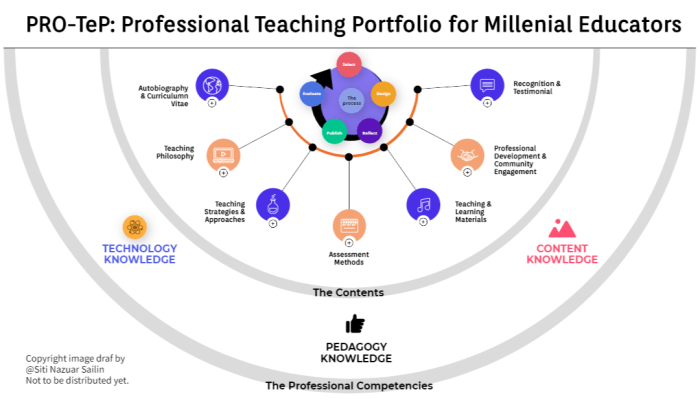Pengaruh Virtual Art Gallery Pada Pemahaman Seni Rupa Siswa

“Pengaruh Pembelajaran Berbasis Virtual Art Gallery terhadap Pemahaman Seni Rupa Siswa”—that’s a mouthful, right? But seriously, imagine learning art history not from dusty textbooks, but by virtually strolling through the Louvre or the Met, checking out masterpieces up close and personal.
This isn’t some futuristic fantasy; it’s the reality of using Virtual Art Galleries in education. This study dives deep into how this totally rad approach impacts students’ understanding of art, from basic elements to complex concepts.
This research explores the effectiveness of Virtual Art Galleries in teaching art. We’ll compare it to traditional methods, looking at accessibility, cost, and how engaging it is. We’ll also see how it affects students’ grasp of art elements (line, shape, color, etc.), principles (balance, rhythm), and their ability to analyze and appreciate art.
Get ready for a deep dive into the awesome world of art education 2.0!
Latar Belakang Pembelajaran Berbasis Virtual Art Gallery

Yo, what’s up, art peeps? Let’s dive into how virtual art galleries are totally changing the game in art education. Forget dusty old textbooks and static museum trips – we’re talking immersive, interactive learning experiences that are way more engaging than your average art class.
This ain’t your grandma’s art history lesson!
A virtual art gallery, in the context of art education, is basically a digital space where students can explore artworks from all eras and styles. Think 3D models, high-res images, interactive timelines, and even virtual tours of real-world galleries – all accessible from anywhere with an internet connection.
It’s like having the Louvre or the Met right at your fingertips, 24/7.
Manfaat Penerapan Virtual Art Gallery dalam Pembelajaran Seni Rupa
Okay, so why is this virtual art gallery thing such a big deal? Well, for starters, it levels up accessibility. No more worrying about field trips costing a fortune or limited access to museums – everyone can get in on the action.
Plus, the interactivity is on point. Students can zoom in on details, rotate sculptures, and even compare different artists’ styles side-by-side. It’s a total game-changer for engagement and understanding.
- Increased accessibility for students regardless of location or socioeconomic status.
- Enhanced engagement through interactive features and immersive experiences.
- Exposure to a wider range of artworks and artistic styles than traditional methods.
- Development of digital literacy skills essential in today’s world.
- Cost-effective alternative to expensive field trips and physical art materials.
Perbandingan Pembelajaran Seni Rupa Konvensional dengan Pembelajaran Berbasis Virtual Art Gallery
Let’s be real, traditional art classes have their place, but virtual galleries add a whole new dimension. Think of it like this: traditional classes are like having a one-on-one tutor, while virtual galleries are like having access to a whole museum’s worth of information and resources.
Both have their pros and cons, but the virtual approach opens up a world of possibilities.
Tantangan dan Kendala Implementasi Virtual Art Gallery untuk Pembelajaran Seni Rupa
It’s not all sunshine and rainbows, though. Implementing virtual art galleries comes with its own set of hurdles. We’re talking about things like needing reliable internet access, ensuring digital literacy among students and teachers, and dealing with potential technical glitches.
Plus, some students might still prefer the hands-on experience of a traditional art class. It’s all about finding the right balance.
- Requirement for reliable internet access and digital devices.
- Need for teacher training and development in utilizing virtual gallery platforms.
- Potential for technical issues and disruptions to learning.
- Addressing the digital divide and ensuring equitable access for all students.
- Maintaining the balance between virtual and hands-on learning experiences.
Tabel Perbandingan Metode Pembelajaran
Here’s a quick breakdown to show you the key differences. It’s like comparing apples and oranges, but both are pretty awesome in their own way.
| Aspek | Pembelajaran Konvensional | Pembelajaran Berbasis Virtual Art Gallery |
|---|---|---|
| Aksesibilitas | Terbatas oleh lokasi fisik museum dan ketersediaan transportasi. | Lebih luas, dapat diakses dari mana saja dengan koneksi internet. |
| Biaya | Relatif tinggi, termasuk biaya transportasi, tiket masuk museum, dan bahan-bahan seni. | Relatif rendah, terutama jika platform virtual gratis atau terjangkau. |
| Interaktivitas | Terbatas, terutama pada observasi karya seni. | Tinggi, memungkinkan interaksi langsung dengan karya seni melalui zoom, rotasi, dan fitur lainnya. |
| Efektivitas Pembelajaran | Bergantung pada kualitas pengajaran dan keterlibatan siswa. | Berpotensi lebih efektif dengan interaksi yang lebih tinggi dan aksesibilitas yang luas, namun bergantung pada kualitas platform dan desain pembelajaran. |
Pengaruh terhadap Pemahaman Konsep Seni Rupa
Yo, peeps! Virtual Art Gallery (VAG) ain’t just another online museum; it’s a total game-changer for how students, especially in high school, dig art. Think of it as a supercharged field trip, but way more customizable and accessible.
This section dives into how VAG boosts understanding of art concepts, making those masterpieces way less intimidating and way more engaging.
Pengaruh VAG terhadap Pemahaman Elemen Seni Rupa
VAG totally levels up the learning experience by letting students zoom in on details, explore textures virtually, and analyze elements like lines, shapes, colors, and textures in a way that’s way more interactive than a textbook ever could. Instead of just seeing a picture in a book, students can rotate a sculpture, examine brushstrokes up close, and compare the color palettes of different paintings – all from their laptops or tablets.
- Garis:Students can trace the lines in a drawing to understand how they create movement and emotion.
- Bentuk:Examining 3D models in the VAG allows students to understand how shapes are created through light and shadow, and how they contribute to the overall composition.
- Warna:The VAG lets students explore color palettes, analyze how artists use color to create mood, and compare different color schemes across various artworks.
- Tekstur:Even though it’s virtual, the high-resolution images in a VAG often give a good sense of the texture of a painting or sculpture, enabling students to understand the artist’s technique and the effect of texture on the overall artwork.
- Ruang:Through interactive features, students can navigate virtual spaces and explore how artists create depth and perspective in their work.
Pengaruh VAG terhadap Pemahaman Prinsip Seni Rupa
It’s not just about the individual elements; VAG also helps students grasp the bigger picture – the principles that bring those elements together. It’s like learning the rules of the game before you start playing.
- Kesatuan:Students can see how different elements work together to create a cohesive whole, understanding how artists achieve harmony and unity within a single piece.
- Keseimbangan:By examining the placement of elements, students can understand symmetrical and asymmetrical balance and how it affects the viewer’s experience.
- Irama:VAG allows students to identify repetitive patterns and rhythms in artwork, understanding how they create movement and visual interest.
- Penekanan:Students can pinpoint focal points in artworks and understand how artists use techniques like contrast, size, and placement to draw attention to specific areas.
- Proporsi:The ability to zoom and analyze details in the VAG allows students to understand the relationship between different parts of an artwork and how they contribute to the overall scale and harmony.
Peningkatan Kemampuan Analisis dan Apresiasi Karya Seni Rupa, “Pengaruh Pembelajaran Berbasis Virtual Art Gallery terhadap Pemahaman Seni Rupa Siswa”
VAG isn’t just passive viewing; it’s active engagement. It’s like having a private art critic on hand to guide your exploration. Students aren’t just looking at art; they’re dissecting it, debating it, and developing their own critical perspectives.
For example, a student might compare and contrast two different portraits, analyzing the use of light and shadow, brushstrokes, and color to understand the artist’s intent and the emotional impact of each piece. The interactive tools in VAG allow for a deeper level of analysis than traditional methods.
Pemahaman Berbagai Gaya dan Periode Seni Rupa
VAG is like having access to every major art museum in the world, all in one place. Students can journey through time, exploring different artistic movements and styles – from ancient Egyptian art to modern pop art – all without leaving their seats.
This broad exposure helps students contextualize individual artworks within a larger historical and cultural framework.
Ilustrasi Interaksi Siswa dengan Karya Seni Rupa dalam VAG
Imagine a student exploring a Renaissance painting in a VAG. They can zoom in on the details of the clothing, the expressions on the faces, and the perspective used to create depth. They can then compare it to a contemporary painting, analyzing the differences in style, technique, and subject matter.
By rotating a virtual sculpture, they can see how the artist manipulated form and light to achieve a certain effect. This interactive exploration allows for a far richer understanding of perspective and composition than simply viewing a static image.
For instance, let’s say the student is analyzing Leonardo da Vinci’s “The Last Supper.” In a VAG, they can zoom in on the perspective lines converging at the vanishing point, visually demonstrating how da Vinci created depth and spatial relationships.
They can then compare this technique to a modern artwork that uses a different perspective, such as a cubist painting, highlighting the differences in how artists represent space and form across different periods.
Pengaruh terhadap Keterampilan Kreativitas dan Ekspresi Siswa: “Pengaruh Pembelajaran Berbasis Virtual Art Gallery Terhadap Pemahaman Seni Rupa Siswa”
Virtual Art Gallery (VAG) bukan cuma tempat pamer karya seni, bro! Ini platform super kece yang bisa ngeboost kreativitas dan ekspresi diri siswa. Bayangin aja, akses ke ribuan karya seni dari berbagai era dan budaya, langsung di ujung jari! Ini kesempatan emas buat eksplorasi ide dan bereksperimen dengan teknik baru tanpa batas.
VAG bikin belajar seni jadi lebih seru dan engaging, jauh dari kesan kaku dan membosankan.
Rangsangan Kreativitas Melalui Eksplorasi Media dan Teknik
Akses tak terbatas ke beragam karya seni di VAG membuka peluang luas bagi siswa untuk bereksperimen. Mereka bisa mengamati detail teknik, mulai dari goresan kuas yang halus hingga efek digital yang futuristik. Bayangin, siswa bisa banding-bandingin gaya lukisan realis dengan abstrak, atau eksplorasi teknik printmaking tradisional dengan digital art.
Ini menginspirasi mereka untuk mencoba media dan teknik baru, menghasilkan karya yang lebih unik dan personal.
Pengembangan Kemampuan Ekspresi Melalui Karya Seni
VAG memberikan wadah bagi siswa untuk mengekspresikan diri secara visual. Mereka bisa menginterpretasi karya seni yang mereka lihat, lalu menuangkannya ke dalam karya mereka sendiri. Misalnya, setelah mengamati karya surealis, siswa bisa menciptakan karya dengan tema mimpi atau imajinasi mereka sendiri.
Proses ini membantu mereka mengembangkan kemampuan komunikasi visual dan percaya diri dalam mengekspresikan ide dan gagasan.
Langkah-langkah Pembelajaran Berbasis VAG untuk Meningkatkan Kreativitas dan Ekspresi
- Eksplorasi Koleksi:Siswa diberikan waktu untuk menjelajahi VAG, fokus pada karya-karya yang menarik perhatian mereka. Mereka bisa membuat catatan, sketsa, atau bahkan merekam video reaksi mereka.
- Analisis Karya:Siswa menganalisis karya seni yang mereka pilih, memperhatikan elemen-elemen seni seperti warna, garis, bentuk, tekstur, dan komposisi. Mereka mendiskusikan makna dan pesan yang ingin disampaikan seniman.
- Kreasi Karya Baru:Siswa terinspirasi untuk menciptakan karya seni mereka sendiri, terinspirasi dari karya-karya yang telah mereka analisis. Mereka bebas bereksperimen dengan berbagai media dan teknik.
- Presentasi dan Diskusi:Siswa mempresentasikan karya mereka dan mendiskusikan proses kreatif yang mereka lalui. Ini mendorong berbagi ide dan mendapatkan umpan balik dari teman sebaya.
Contoh Kegiatan Pembelajaran Berbasis VAG untuk Meningkatkan Problem-Solving
Sebagai contoh, siswa bisa diberikan tantangan untuk menciptakan karya seni yang menginterpretasi suatu tema tertentu, misalnya “perubahan iklim,” dengan memanfaatkan elemen-elemen visual yang mereka pelajari dari VAG. Mereka harus memecahkan masalah bagaimana menyampaikan pesan yang kompleks secara visual, memilih media yang tepat, dan mengkombinasikan berbagai teknik untuk mencapai hasil yang efektif.
Ini melatih kemampuan problem-solving mereka dalam konteks seni rupa.
Kesaksian Siswa tentang Pengalaman Menggunakan VAG
“Awalnya gue ragu, tapi VAG bikin gue buka pikiran banget! Gue jadi lebih berani bereksperimen dengan warna dan teknik baru. Rasanya kayak dunia seni jadi lebih dekat dan nggak menakutkan lagi!”
Sarah, 16 tahun.
“Gue suka banget bisa liat karya seni dari seluruh dunia di VAG. Ini ngasih gue inspirasi yang nggak terbatas dan bikin karya gue jadi lebih unik dan bermakna.”
David, 17 tahun.
Pengaruh terhadap Motivasi dan Minat Belajar Seni Rupa
Yo, peeps! Virtual Art Galleries (VAGs) aren’t just some dusty old museum online; they’re a total game-changer for art education. Think of it as bringing the Met or the Louvre straight to your classroom – but way cooler and way more interactive.
This section dives deep into how VAGs totally boost student motivation and interest in art. We’re talking about a serious upgrade from those boring textbook illustrations.
Faktor-faktor yang Mempengaruhi Motivasi dan Minat Belajar
Several factors play a major role in how much students dig the VAG experience. It’s not just about the tech; it’s about the whole vibe. Think of it like this: a killer playlist can make a workout awesome, but a lame one can make you want to quit.
The same applies here. We’re talking about engagement, interactivity, and relevance to the students’ lives.
- Interaktivitas:A static gallery? Snoozefest. VAGs with interactive elements like 360° views, zoom capabilities, and artist interviews keep students hooked. Imagine being able to walk -through* a Monet painting – mind blown!
- Relevansi:Connecting art to students’ lives is key. A VAG showcasing contemporary art, street art, or even student-created work can be way more engaging than classical masterpieces alone. It’s all about showing them that art isn’t some stuffy, distant thing.
- Aksesibilitas:VAGs break down geographical barriers. Students can explore museums worldwide without leaving their classroom. Imagine exploring the ancient Egyptian artifacts in the Louvre without ever having to leave your school!
- Personalization:Customizable learning paths and personalized feedback within the VAG can tailor the experience to individual student needs and preferences. Think of it as their own curated art experience.
Strategi Peningkatan Motivasi dan Minat Belajar Melalui VAG
Okay, so we know -what* influences motivation. Now, let’s talk -how* to make it happen. This isn’t about forcing kids to stare at paintings; it’s about creating an experience they’ll actually -want* to be a part of.
- Gamifikasi:Incorporate game-like elements like points, badges, or leaderboards to add a competitive and fun element to the learning process. Think art-themed scavenger hunts or virtual challenges within the gallery.
- Kolaborasi:Encourage students to create their own virtual exhibits or collaborate on projects related to the art they explore. It’s all about teamwork and creative expression.
- Pembelajaran Berdiferensiasi:Cater to diverse learning styles by offering various activities within the VAG. Some students might prefer writing critiques, others creating digital art inspired by the exhibits, and some might prefer interactive quizzes.
- Integrasi dengan Mata Pelajaran Lain:Connect the VAG experience to other subjects like history, literature, or even science to show students how art is intertwined with everything.
Contoh Implementasi VAG yang Meningkatkan Partisipasi Aktif Siswa
Let’s get practical. Here’s how to make this thing pop. We’re talking about turning passive observation into active engagement. It’s about making the students the stars of the show.
| Aktivitas | Penjelasan |
|---|---|
| Virtual Curator Project | Students curate their own mini-exhibits within the VAG, selecting artworks based on a specific theme and writing descriptions and artist bios. Think of it as their own mini-museum within the larger gallery. This lets them be the experts and share their knowledge. |
| Art-Based Storytelling | Students use the artworks in the VAG as inspiration to create their own stories, poems, or even short films. This fosters creativity and helps them connect with the art on a deeper level. It’s like using the gallery as a springboard for their own artistic expression. |
| Digital Art Creation | Students recreate artworks from the VAG using digital tools, or create their own artwork inspired by the styles and techniques they see. It’s about bridging the gap between observation and creation. |
Kegiatan Berbasis VAG untuk Meningkatkan Engagement Siswa
Time for the ultimate art challenge. This isn’t just about looking at art; it’s about -experiencing* it in a whole new way. This activity combines technology, creativity, and collaboration for maximum engagement.
The “Art Heist” Challenge:Students work in teams to “steal” (digitally, of course!) a specific artwork from the VAG. They must then create a presentation explaining why that artwork is significant and worthy of being “stolen,” incorporating research, creative writing, and presentation skills. This activity combines research, creativity, and presentation skills, turning the learning process into an exciting game.
The winning team gets bragging rights (and maybe some extra credit!).
Ringkasan Akhir
So, ditch the dusty textbooks and embrace the digital canvas! This research shows that Virtual Art Galleries are not just a cool tech upgrade—they’re a game-changer for art education. They boost student engagement, making learning art way more fun and accessible.
It’s like unlocking a secret level in the art world, and students are totally crushing it. Virtual Art Galleries? Totally lit!
Panduan Pertanyaan dan Jawaban
Apa saja perangkat lunak yang bisa digunakan untuk membuat Virtual Art Gallery?
Ada banyak pilihan, mulai dari platform sederhana seperti Google Sites hingga software yang lebih kompleks seperti Unity atau Unreal Engine, tergantung kebutuhan dan anggaran.
Bagaimana cara mengatasi masalah akses internet yang tidak merata untuk mengimplementasikan Virtual Art Gallery?
Strategi yang bisa dipertimbangkan antara lain menyediakan akses internet di sekolah, menggunakan konten offline, atau menggabungkan pembelajaran online dan offline.
Bagaimana cara memastikan semua siswa dapat berpartisipasi aktif dalam Virtual Art Gallery, termasuk siswa dengan disabilitas?
Desain Virtual Art Gallery harus memastikan aksesibilitas bagi semua siswa, misalnya dengan menyediakan teks alternatif untuk gambar, navigasi yang mudah digunakan, dan fitur pendukung lainnya.




